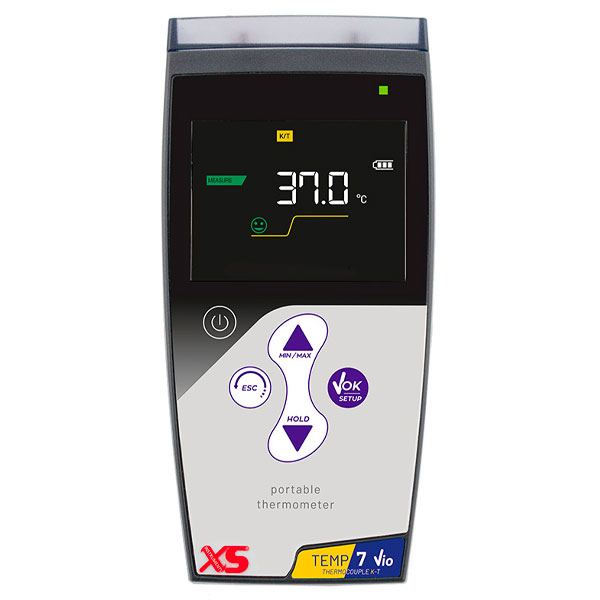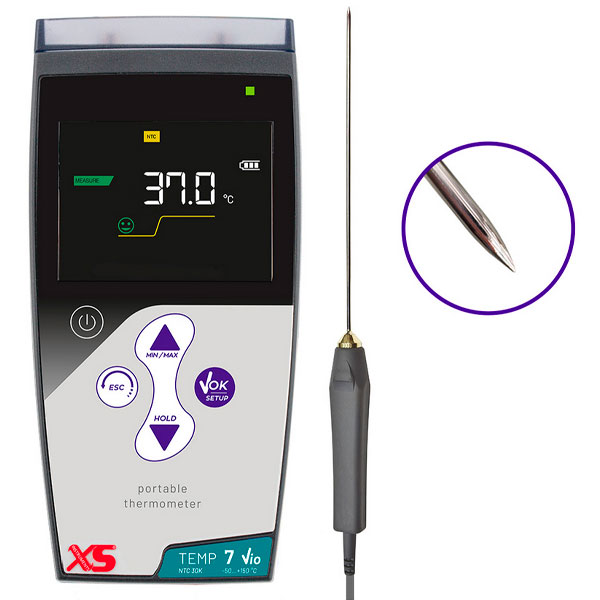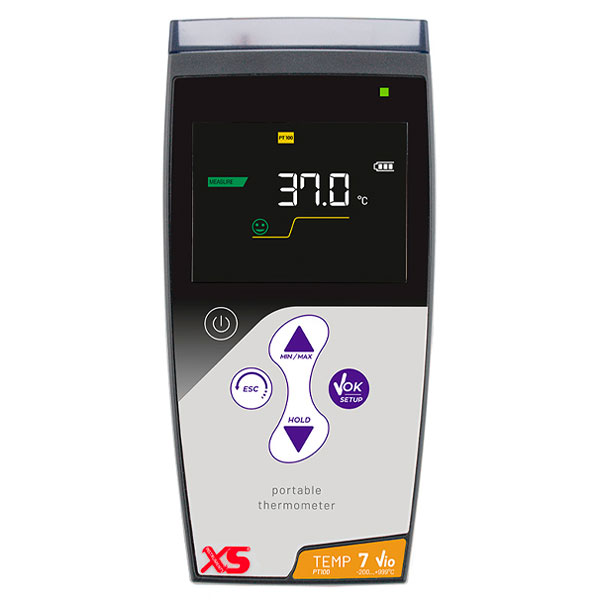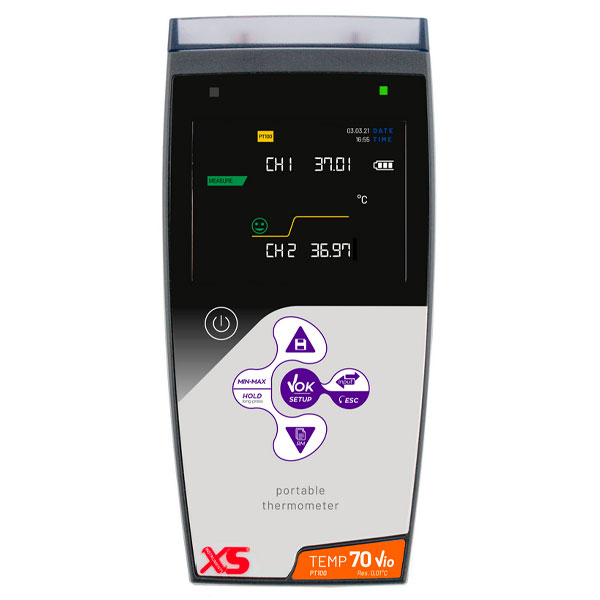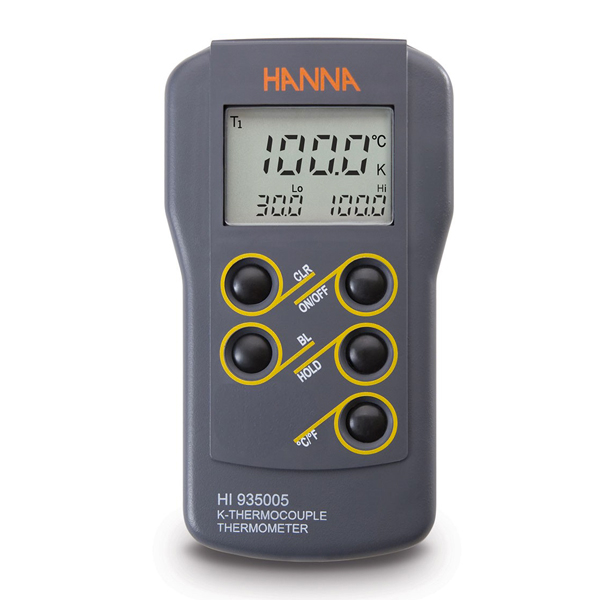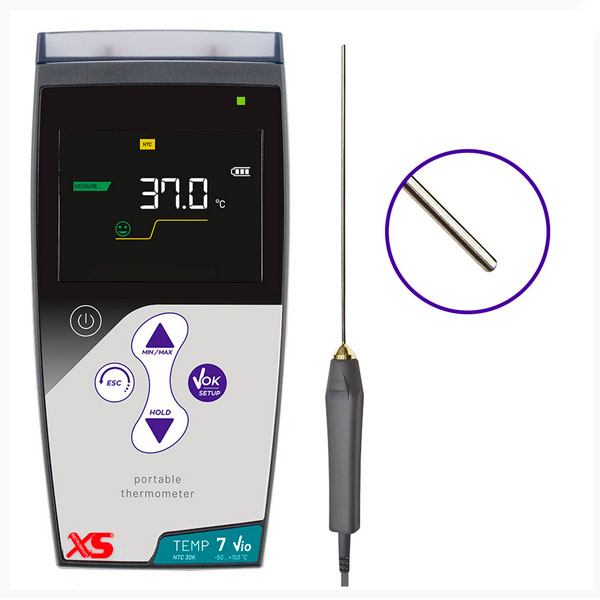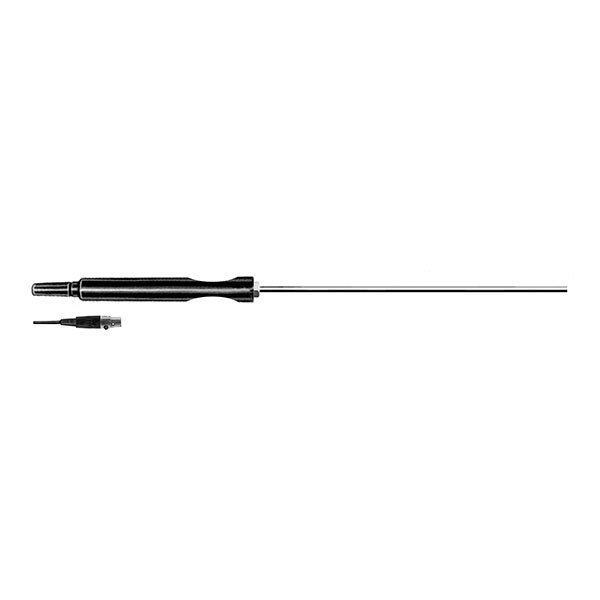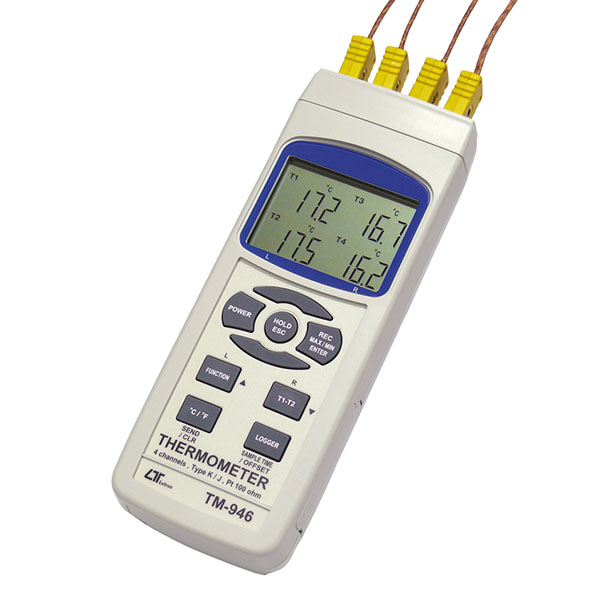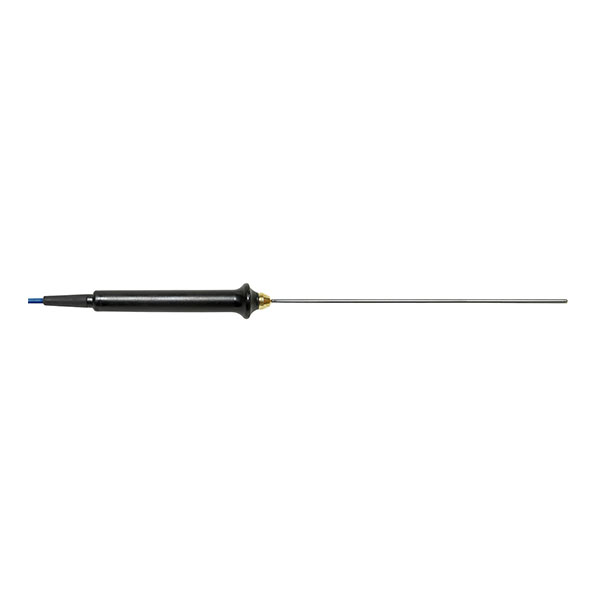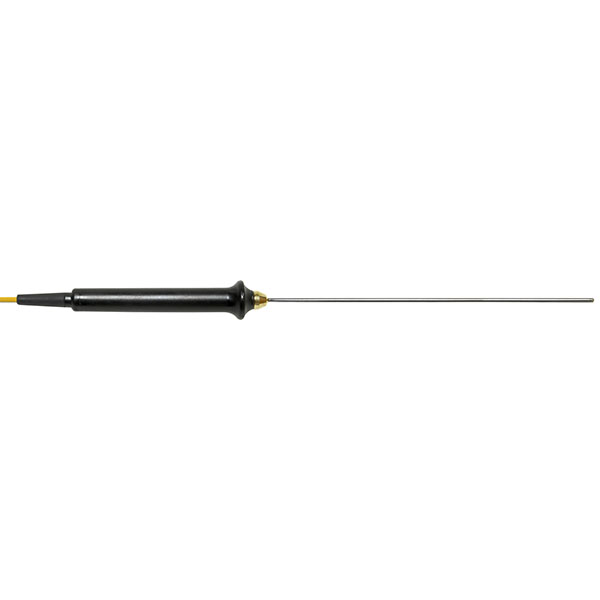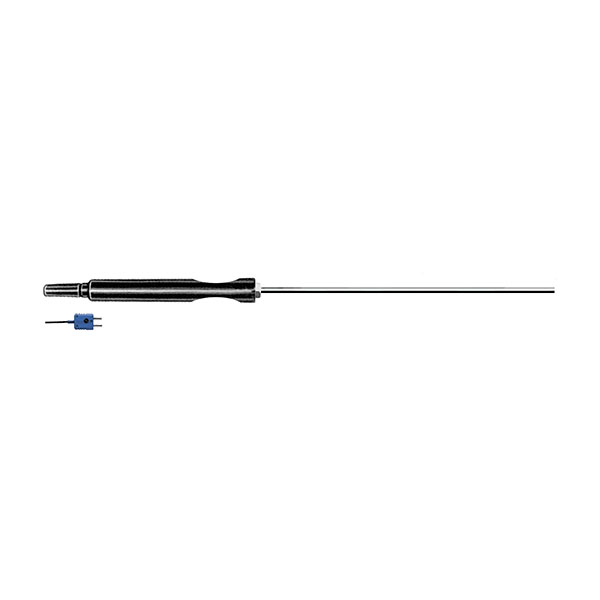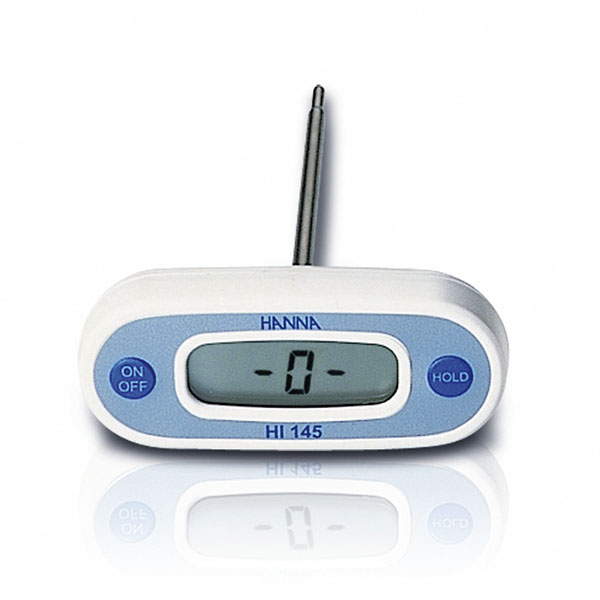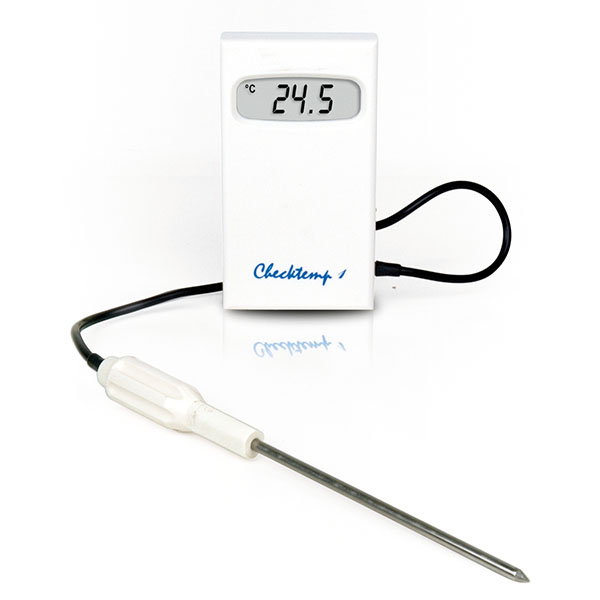The probe thermometer is a special type of thermometer used in the laboratory. It differs from the standard liquid model in its greater accuracy and speed of measurement, making it the most common type for scientific processes in modern chemistry.
In addition to chemistry, this probe thermometer has applications in several fields, including culinary or pharmaceuticals. For example, the thermometer is also commonly used for measuring meat during cooking.
 Probe Thermometer Structure
Probe Thermometer Structure
The main difference between the probe thermometer and the liquid model is the presence of a probe. This consists of a sensor consisting of a thermistor, which is powered by electricity. The probe detects temperature changes via the electrical resistance. It is characterised by its thin, elongated shape, which enables it to reach the depth required for temperature calculation. For example, in its laboratory application, it can be inserted into a liquid. The high sensing sensitivity of the sensor allows the thermometer to be much more accurate and faster than the liquid model.
The probe is commonly manufactured in stainless steel.
The other component of this type of thermometer is the control unit. It receives data from the probe, which is then shown on a display. The control unit can perform complex tasks and measure the temperature according to specific indications. For example, its 2-level display allows simultaneous viewing of the current measurement and the maximum and minimum temperatures measured during the work cycle.
Use of probe thermometers
 In chemistry, the probe thermometer is used for the precise measurement of the temperature of both liquid and solid substances. On average, a probe measures a temperature range from -50°C to +300°C.
In chemistry, the probe thermometer is used for the precise measurement of the temperature of both liquid and solid substances. On average, a probe measures a temperature range from -50°C to +300°C.
As mentioned above, it is also used in the culinary and restoration fields. The sensor is in fact extremely useful in calculating the temperature of glue and waxes during the heating process required for their use.
The use of this type of thermometer is simple. It is necessary to switch on the instrument, and then insert the probe into the material to be measured. After waiting for the necessary time to calculate, the temperature is shown on the instrument display.
.
Features
The probe thermometer is capable of performing a variety of functions, from simple to more complex, depending on how sophisticated the model used is.
One of its functions is the ability to measure temperature in different gradations. For example, it can go from Celsius to Fahrenheit.
One of the features that distinguishes digital models from each other is the measuring range. There are thermometers that measure a range between - 50° and + 150° C, while other more sophisticated models measure a range between - 50° and 1350° C.
 Food probe thermometers
Food probe thermometers
A specific use of this instrument is in the food sector.
The food probe thermometer is indispensable for detecting the temperature inside a mass that must be penetrated (with its probe) or immersed in a food liquid.
In the Colaver catalogue there are several instruments with these characteristics suitable for use in food laboratories.



 Probe Thermometer Structure
Probe Thermometer Structure In chemistry, the probe thermometer is used for the precise measurement of the temperature of both liquid and solid substances. On average, a probe measures a temperature range from -50°C to +300°C.
In chemistry, the probe thermometer is used for the precise measurement of the temperature of both liquid and solid substances. On average, a probe measures a temperature range from -50°C to +300°C. Food probe thermometers
Food probe thermometers